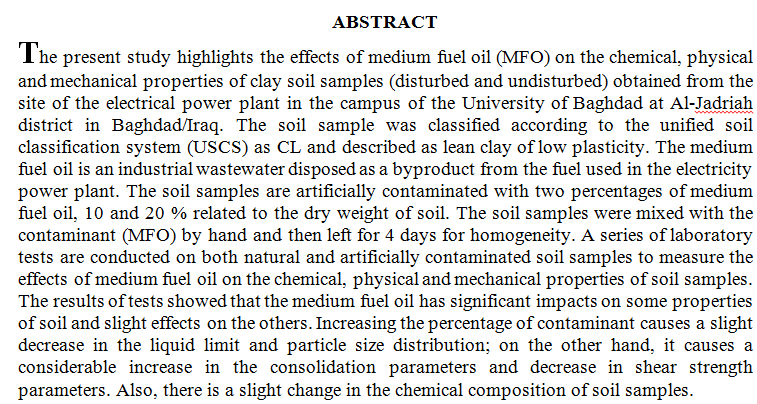
The research seeks to identify the image of foreign oil companies operating in Iraq among the public of Basra, and the research aims to clarify the mental image of foreign oil companies among the Iraqi public, and to identify the extent to which the Iraqi public benefit from the social responsibility programs offered by foreign oil companies and their contribution to improving the standard of living and services for the population. Nearby areas and society as a whole, the research is classified within descriptive research, and the researcher used the survey method for the Iraqi public in Basra governorate, which includes the areas in which these companies are located, and he used the scale tool to find out, so he distributed 600 que
... Show MoreBio-diesel is an attractive fuel fordiesel engines. The feedstock for bio-diesel production is usually vegetable oil, waste cooking oil, or animal fats. This work provides an overview concerning bio-diesel production. Also, this work focuses on the commercial production of biodiesel. The objective is to study the influence of these parameters on the yield of produced. The biodiesel production affecting by many parameters such s alcohol ratio (5%, 10%,15 %, 20%,25%,30%35% vol.), catalyst loading (5,10,15,20,25) g,temperature (45,50,55,60,65,70,75)°C,reaction time (0-6) h, mixing rate (400-1000) rpm. the maximum bio-diesel production yield (95%) was obtained using 20% methanol ratio and 15g biocatalyst at 60°C.
 (2)
(2)
 (14)
(14)
 (6)
(6)
Zinc Oxide thin film of 2 μm thickness has been grown on glass substrate by pulsed laser deposition technique at substrate temperature of 500 oC under the vacuum pressure of 8×10-2 mbar. The optical properties concerning the absorption, and transmission spectra were studied for the prepared thin film. From the transmission spectra, the optical gap and linear refractive index of the ZnO thin film was determined. The structure of the ZnO thin film was tested with X-Ray diffraction and it was formed to be a polycrystalline with many peaks.
Background: Polymorphisms in the TNF-α gene affect the development and progression of rheumatoid arthritis. Objective: To investigate the associations between (-806 T/C) and (-857 T/C) SNPs with rheumatoid arthritis severity and susceptibility in a sample of Iraqi patients. Methods: A case-control study was conducted in Baghdad, Iraq. Twenty healthy controls and 63 patients confirmed to be newly diagnosed with rheumatoid arthritis were included. Those are divided into two groups (patients and controls), and the patients were further subdivided into severe and mild-moderate groups. Samples from those participants were analyzed for clinical and inflammatory parameter measurements. Genotyping by the Sanger method was performed to stu
... Show More (1)
(1)
 (1)
(1)
Cadmium oxide (CdO) thin films were deposited using the sequencing ion layer adsorption and reaction (SILAR) method. In this study, the effect of the pH value of an aqueous solution of cadmium acetate at a concentration of 0.2 mol of the cadmium oxide film was determined. The solution source for the cadmium oxide film was cadmium ions and an aqueous ammonia solution. The CdO films were deposited on glass substrates at a temperature of 90 ℃. The cadmium oxide film thickness was determined by the weight difference method at pH values (7.2, 8.2). X-ray diffraction (XRD) and scanning electron microscopy (SEM) showed that the size of the crystals increased with the increase in the solution (pH). While the UV-visible spectra of the fil
... Show More (6)
(6)
Background:Plant-derived compounds have action alongside Gram-positive and Gram-negative bacteria and numerous compounds, inhibit efflux pumps and hence have become known as efflux pump inhibitors. Clarithromycin is a macrolide antibiotic used to treat pharyngitis, tonsillitis, acute maxillary sinusitis and acute bacterial exacerbation of chronic bronchitis the antibacterial range is the similar as erythromycin but it is active against Mycobacterium avium complex, M.leprae and atypical mycobacteria. The in vitro antibacterial activity results of different boswellic acid compounds discovered alpha keto-boswellic acid (AKBA) to be the preponderance potent antibacterial compound alongside Gram-positive pathogens, but it showed no significant a
... Show More (6)
(6)
Nowadays nanoparticles have widespread application in various industriesbecause of their special and unique features, there are many studies in sideeffects of nanomaterial. This study done by 40 white female mice withevery other day intraperitoneally injection of low and high doses of both ofZnO kg of body weight) and FeOnanoparticles (5 and 40 mg/kg). After a 15 days period, the mice weresacrificed and blood samples were collected for hormone analysis, andtissue samples for morphometric studies.Statistical Analysis shows significant differences in LH, Estrogen,Progesterone hormone levels between groups, while there are insignificantdifferences in Follicle stimulating hormone (FSH) level between thegroups compared with its level in
... Show More (10)
(10)
Abstract: Background: High percentage of diabetes patients complain from post extraction hemorrhage. Many types of hemostatic materials are used to stop bleeding after teeth extraction: diode lasers are good hemostatic agents owing to their highly absorption by hemoglobin therefore they are used in soft tissue procedures with relatively no effects on dental hard tissues due to their poorly absorption by water and hydroxyapatite. Objectives: The aim of this study is to evaluate the efficiency of diode laser to assist the clot formation after tooth extraction for type II diabetes patients with minimum temperature elevation to prevent periodontal destruction. Materials and methods: From 12 type II diabetes patients (7 males and 5 females wi
... Show More